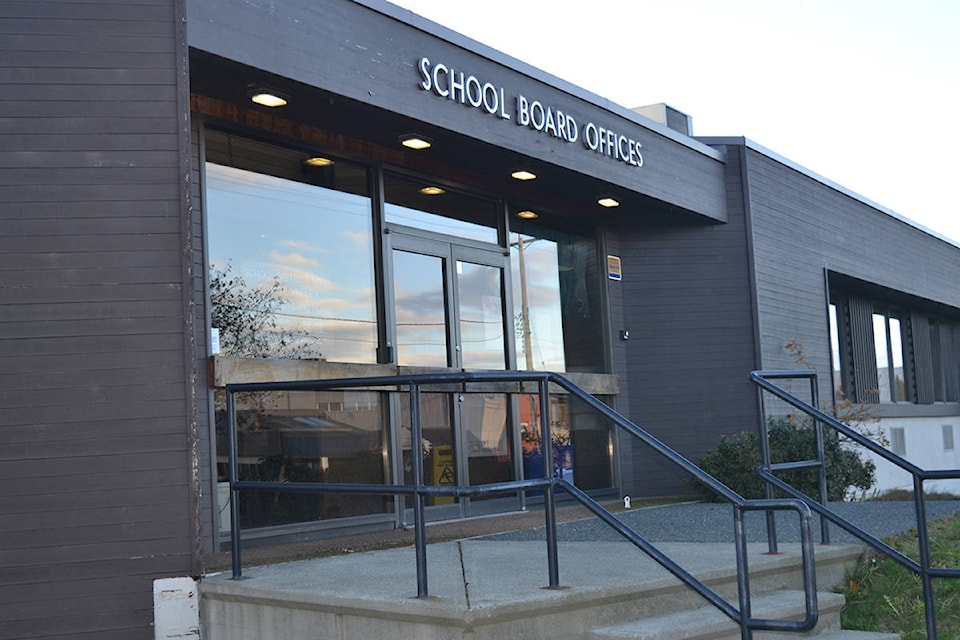Following a recent rise in student enrollment, an increasing population across the region, and a Supreme Court of Canada decision that reduced classroom sizes in B.C., it’s no surprise that the Comox Valley’s schools are facing a spacing shortage.
With very few vacant classrooms to offer at the moment, the school district has faced challenges when it comes to where to put some students.
Read More: Comox Valley schools see increased student enrollment
With this issue in the foreground, School District 71 is rolling out its Long Range Facilities Plan (LRFP). The district will host two information sessions next week on its 10-year plan regarding its physical structures and facilities.
“It’s important for us to stress that we really want the public to come out and get this information, to become better informed about these facilities and understand that our strategic priorities drive the facilities plan, and not the reverse,” said SD71 communications coordinator Mary Lee.
The information sessions are open to the public. They will take place on Tuesday, March 6 and Wednesday, March 7 from 6–8 p.m. Tuesday’s session will be held at Lake Trail School’s drama room, while Wednesday’s will take place at Mark R. Isfeld Secondary School’s multi-purpose room.
A report on the LRFP presented to the SD71 board of trustees on Feb. 27 acknowledged that the district has experienced “significant stress” with regards to its facilities in recent years.
To read the report on the LRFP, click here.
The stress is partially due to a November 2016 Supreme Court ruling that followed a lengthy legal battle between the B.C. government and the British Columbia Teachers’ Federation (BCTF).
The court ruling reinstated language into the BCTF’s collective agreement on class size limits and composition requirements, which essentially decreased the number of students per classroom in B.C.
Read More: One year later: How has the 2016 Supreme Court ruling affected Comox Valley schools?
While teachers throughout the Comox Valley mainly celebrated the decision, the smaller class sizes brought their own set of challenges. The district had to hire 60 additional teachers and find 40 more classrooms for this year.
Partially as a result of the court decision, in May 2017, the SD71 board approved moving Grade 6 students at three elementary schools in west Courtenay to Lake Trail Middle School. The decision affected about 90 students and was made to deal with a classroom shortage at Arden Elementary.
“To address the space issue, Arden, Courtenay and Puntledge [elementary schools] all moved their Grade 6 students to Lake Trail,” said Lee.
Read More: West Courtenay Grade 6 students moving to Lake Trail school
Last night, the SD71 board of trustees approved continuing to migrate the extra Grade 6 students to Lake Trail school until 2019-20.
The school district also dealt with its spacing issues this year by commissioning Muchalat Construction to build another six modular classrooms.
Read More: Modular classrooms erected to accommodate influx of teachers in the Valley
According to the LRFP report, the nominal capacity for the Comox Valley’s schools is 8,920 students. The district currently has 7,486 students enrolled but is projected to reach 8,518 students by 2027.
SD71’s target is to operate at 85 per cent enrolment capacity, with that number rising to 90 per cent when the district reaches 7,500 students.
(The nominal capacity is a generalization, as it doesn’t include students in Distributed Learning programs and doesn’t factor in modular classrooms).
Lee also mentioned that LRFPs are government-mandated in B.C. and school districts are required to seek the Ministry of Education’s approval for their plans before any funding for capital expenditures can be approved.
